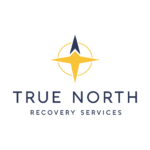Cravings can feel overwhelming, whether you’re in recovery from addiction or trying to break unhealthy habits. The good news? Most cravings peak within 5-30 minutes and naturally subside if you don’t act on them. Understanding this temporary nature is your first step toward freedom. These seven evidence-based techniques can help you ride out even the strongest urges in minutes, giving you the power to reclaim control and stay committed to your recovery journey.
Understanding Cravings: Why They Happen and How Long They Last
What are cravings and why do they occur?
Cravings are intense desires to use substances or engage in specific behaviors. They stem from changes in brain chemistry, particularly involving dopamine—the neurotransmitter associated with pleasure and reward. When you’ve used addictive substances regularly, your brain’s reward system becomes dependent on that external stimulation to feel “normal.”
How long do cravings typically last?
The intensity of a craving usually peaks within 10-30 minutes and then gradually diminishes. Think of it like an ocean wave—it builds, crests, and then breaks. The key is learning to “surf” this wave without giving in to the urge.
Do cravings ever go away completely?
While cravings decrease in frequency and intensity with continued recovery, they may never disappear entirely. This is why developing effective coping strategies is essential for long-term success.
The 7 Most Effective Techniques to Manage Cravings Fast
1. The 15-Minute Rule: Delay and Distract
When a craving strikes, immediately delay your response for 15 minutes. This simple pause creates space between the urge and your action, allowing your brain to reset.
How to apply it:
- Set a timer on your phone for 15 minutes
- Engage in a different activity immediately
- Remind yourself: “This feeling is temporary”
- Wait for the peak intensity to pass
The beauty of this technique is that by the time the timer goes off, the craving has often significantly weakened or disappeared completely.
2. Deep Breathing and Mindfulness Practices
Breathing exercises activate your parasympathetic nervous system, reducing stress and anxiety that fuel cravings.
Quick breathing technique:
- Inhale slowly through your nose for 4 counts
- Hold your breath for 4 counts
- Exhale through your mouth for 6 counts
- Repeat 10 times or until you feel calmer
Mindfulness approach:
- Acknowledge the craving without judgment
- Label it as “just a thought” rather than a command
- Observe it like a passing cloud
- Let it naturally drift away
3. Physical Movement: Get Your Body Moving
Exercise triggers endorphin release and redirects your focus away from cravings. Even brief physical activity can make a significant difference.
Quick movement options:
- Take a brisk 5-10 minute walk
- Do 20 jumping jacks or push-ups
- Run up and down stairs a few times
- Stretch or do yoga poses
- Dance to your favorite song
Physical movement also helps regulate cortisol levels and creates structure in your routine, both crucial for managing urges effectively.
4. Play the Tape Forward
Your brain often romanticizes past substance use, showing you only the “good times.” Counter this with reality.
How to play the tape forward:
- Imagine taking that first drink or using that substance
- Now picture what happens next—all of it
- Visualize the disappointment, guilt, and shame
- Remember the consequences: damaged relationships, lost progress, starting over
- Recall why you chose recovery in the first place
This mental exercise helps you see beyond the immediate satisfaction and recognize the true cost of giving in.
5. Reach Out: Connect With Your Support System
Isolation intensifies cravings. Connection breaks their power.
Support options within 5 minutes:
- Call or text a sponsor, therapist, or trusted friend
- Join an online recovery support group chat
- Text a crisis hotline (SAMHSA: 1-800-662-4357)
- Post in a recovery forum or app
- Send a quick message to your accountability partner
Verbalizing your craving to someone else often diminishes its intensity immediately.
6. Sensory Distractions: Engage Your Senses
Redirecting your attention through sensory experiences can quickly interrupt craving patterns.
Effective sensory techniques:
| Sense | Technique | How It Helps |
|---|---|---|
| Smell | Sniff peppermint oil or fresh flowers | Reduces food and substance cravings |
| Taste | Chew sugar-free mint gum | Occupies your mouth and changes taste sensations |
| Touch | Hold ice cubes or splash cold water on face | Creates immediate physical distraction |
| Sight | Look at inspiring recovery photos | Reinforces positive visual cues |
| Sound | Listen to uplifting music or nature sounds | Shifts emotional state quickly |
7. Hydration and Healthy Substitution
Dehydration often mimics hunger and intensifies cravings. Your body may be signaling thirst rather than a genuine need.
Hydration strategy:
- Drink a full glass of water immediately
- Wait 10-15 minutes to reassess the craving
- Keep a water bottle accessible at all times
Smart substitutions:
- Craving something sweet? Try fresh fruit or herbal tea
- Need something crunchy? Choose carrots or whole-grain crackers
- Want comfort? Opt for protein-rich snacks like nuts
Common Craving Triggers and How to Identify Yours
What triggers cravings in recovery?
Triggers are internal or external stimuli that spark the urge to use. Common triggers include:
External triggers:
- People you used substances with
- Places associated with past use
- Objects like drug paraphernalia or bottles
- Time of day when you typically used
- Specific social situations
Internal triggers:
- Stress and anxiety
- Boredom or loneliness
- Negative emotions (anger, sadness, frustration)
- Physical pain or discomfort
- Positive emotions (celebrations can also trigger use)
How can I identify my personal triggers?
Keep a craving journal for 2-4 weeks. Document:
- When the craving occurred (time, date, location)
- What you were doing beforehand
- Who you were with
- Your emotional state
- What triggered the craving
- How you responded
This awareness empowers you to develop personalized strategies and avoid high-risk situations when possible.
People Also Ask: Quick Answers About Managing Cravings
Can cravings be a sign of relapse?
Cravings themselves are not a sign of relapse—they’re a normal part of recovery. What matters is how you respond to them. Having cravings doesn’t mean you’re failing; it means your brain is still healing from past substance use patterns.
Why are cravings worse at night?
Evening cravings intensify due to decision fatigue, routine changes, and habit formation. Many people used substances at night to unwind, creating strong associative memories. Combat nighttime cravings by establishing healthy evening routines and ensuring adequate sleep.
What’s the difference between a craving and a trigger?
A trigger is the stimulus that initiates the craving, while the craving is the intense desire or urge itself. For example, walking past a bar (trigger) might cause you to crave alcohol (craving).
Building Long-Term Resilience Against Cravings
Managing cravings isn’t just about quick fixes—it’s about building sustainable resilience.
Essential long-term strategies:
Establish healthy routines: Structure reduces uncertainty and provides stability. Regular meal times, sleep schedules, and daily activities create predictability that supports recovery.
Practice self-care consistently: Exercise regularly, eat nutritious meals, and prioritize 7-8 hours of sleep nightly. Physical health directly impacts your ability to manage mental and emotional challenges.
Attend therapy and support groups: Cognitive Behavioral Therapy (CBT) and Mindfulness-Based Relapse Prevention (MBRP) provide proven techniques for managing cravings long-term. Group support offers community and accountability.
Develop new hobbies and interests: Replace substance use with meaningful activities. Learning new skills, pursuing creative outlets, or engaging in physical hobbies fills time positively and builds self-esteem.
Address co-occurring mental health conditions: Anxiety, depression, and trauma often fuel cravings. Treating these underlying conditions through dual diagnosis programs significantly improves recovery outcomes.
When to Seek Professional Help
While these techniques are powerful, some situations require professional intervention:
Seek immediate help if:
- Cravings are constant and overwhelming
- You’re experiencing severe withdrawal symptoms
- You’ve relapsed multiple times
- You’re having thoughts of self-harm
- Mental health symptoms are worsening
Professional treatment offers comprehensive support including medication-assisted treatment (MAT), intensive therapy, and structured recovery programs tailored to your specific needs.
How True North Recovery Services Supports Your Recovery Journey
Recovery is a deeply personal journey that requires compassionate, comprehensive care. At True North Recovery Services, we understand that managing cravings is one of the most challenging aspects of overcoming addiction.
Located in the Denver Metro Area, our outpatient addiction treatment programs provide evidence-based care for substance use disorders, including opioid and alcohol addiction. We offer a holistic approach combining medication-assisted treatment, individual therapy, group support, and recovery services—all designed to help you develop effective coping strategies for managing cravings and building lasting sobriety.
Our mission is to facilitate your journey from substance abuse to self-discovery, helping you find the person you were always meant to be. With compassionate care teams, flexible outpatient scheduling, and acceptance of most major insurance plans, we make quality treatment accessible and convenient. If you or a loved one is struggling with addiction, we’re here to help you find your true north.
Remember: Cravings are temporary, but recovery is forever. Each time you successfully navigate a craving using these techniques, you’re strengthening your recovery and proving to yourself that you have the power to choose a different path. You’ve got this.


